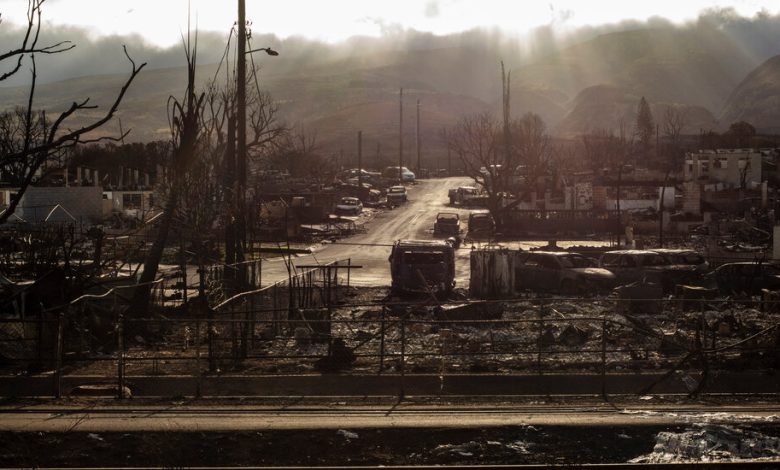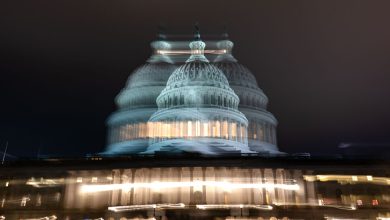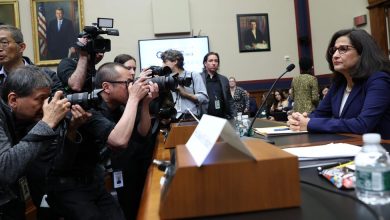Maui Knew Dangerous Wildfires Had Become Inevitable. It Still Wasn’t Ready.

It was the firestorm that wildfire experts and residents on Maui had warned about for years — a blaze fueled by hurricane winds roaring through untamed grasses and into a 13,000-person coastal town with few ways in or out. Local officials had released plan after plan acknowledging that wildfire was all but certain.
But when the nightmare fire erupted across Lahaina on Aug. 8, killing at least 114 people and possibly scores more, systems that had been put in place to sound the alarm and bring people to safety collapsed, residents and experts said.
Cellphone sites were burned and lost power, leaving people unable to communicate or receive emergency alerts. Two main roads providing escape routes out of town were closed because of flames and downed power lines, funneling evacuees into an inferno of gridlock along a coastal road where many burned inside their cars. Powerful emergency sirens never made a sound. Fire hoses almost ran dry.
And while fire departments and wildfire-preparedness groups have long urged people in fire-prone areas like West Maui to be ready and leave early, other advice from the authorities was far less concrete. The state of Hawaii’s own guide for how people should respond to hurricanes, tsunamis and other disasters does not include any direction on what to do in a wildfire.
Nearly two weeks later, as President Biden arrives in Hawaii on Monday to tour the scene of the deadliest American wildfire in a century, the initial shock and grief are giving way to anger and questions about the government’s planning and response, most significantly why communications around Lahaina failed so badly, and whether earlier, more aggressive evacuation measures could have prevented some of the deaths.
Half of all addresses in the contiguous United States face some wildfire risk, meaning that tens of millions of lives may be vulnerable to some of the same failures that engulfed Lahaina: A lack of early evacuations and unpracticed escape plans. Communications networks crippled by flames, power outages and fire-spewing winds. Limited evacuation routes that clog with people fleeing when it is already too late.
Hawaii’s attorney general has ordered an outside investigation into the response by county and state officials; Maui County’s mayor, Richard T. Bissen Jr., has faced persistent questions from residents and the news media about the county’s response; and Maui’s emergency management director resigned last week.

A Maui County firefighter after the Upcountry fire in Kula this month.Credit…Max Whittaker for The New York Times
At a news conference on Friday, Mr. Bissen said: “I think we could always do more. There’s so many things, but I think the right thing to do is for us to cooperate with the investigative agencies, anyone who is going to review this.”
Mr. Bissen said that roads had been blocked both by downed power lines — he said he was told that 29 power lines toppled over during the fire — and by cars that were left behind as people fled on foot.
Elizabeth Pickett, co-executive director of the nonprofit Hawaii Wildfire Management Organization, cautioned against blaming the devastation in Lahaina solely on emergency-management decisions in the middle of a firestorm.
“I hear, ‘Emergency management bungled the response, alarms should have gone off,’” she said. “All these things — they’re pieces. But it’s not telling the whole story of how it got so bad.”
She said Hawaii’s wildfire risk has been growing after years of underinvestment in fire departments and fire prevention. She said that there were not enough access roads for firefighters or evacuation routes in subdivisions, and that landowners were not forced to manage the invasive grasses that become tinder for fires.
“There’s barely enough resources at the Fire Department to do code enforcement,” Ms. Pickett said. “No one with power has heard us.”
Maui has about 60 to 70 firefighters working at any one time, and they are responsible for three islands. Whether Maui had enough firefighters is likely to be part of the inquiries being conducted by the state.
Inside the disaster zone that is central Lahaina lies what some call the grim result of failing to address wildfire danger: a panorama of destruction beginning at the hillsides and cutting through neighborhoods and business districts right up to the ocean and beyond. Floating in the harbor are burned boats bobbing in the sea. Rebuilding is expected to cost more than $5 billion.
Only a few buildings are still standing: a church; a red-roofed home on Front Street that overlooks the ocean; a McDonald’s that was damaged but not destroyed. The one medical clinic is almost entirely razed; a branch of First Hawaiian Bank is now mostly rubble except for a charred A.T.M. and a large vault. At one intersection on Lahainaluna Road, near where the fire is believed to have started, is the charred husk of a fire truck.
Over the weekend, searchers dressed in hazmat suits sifted through debris looking for human remains, workers with the electric company cleared downed power lines that were everywhere, and specialists placed barriers around sewage grates to stop toxic waste from reaching the ocean. The police were preparing to lock down the area in advance of Mr. Biden’s visit on Monday.
Residents have said that there was no organized evacuation, and that they had never been trained on how to leave town in the event of a fast-moving wildfire. Some residents received text message alerts about an emergency, but others did not. And some said that the smoke was so thick and dark that they could not figure out which direction to flee.
J.D. Sheveland, 58, who owns Maui Coffee Company, got caught in a standstill line of cars snaking out of town along Front Street beside the ocean. The wider Honoapiilani Highway was impassable because of downed live power lines.
He never heard police officers or firefighters on loudspeakers urging people to evacuate.
“Once it turned into a firestorm, it was just too late,” he said. “No evacuation would have helped.”
In the aftermath of the fire, one of the decisions being scrutinized has been why local authorities did not activate the system of warning sirens that has more commonly been used in Hawaii to warn residents of a tsunami threat.
The absence of the sirens was criticalbecause so many people had no cell service to alert them to the growing threat in the parched hills above Lahaina. Even before the fire erupted, many people around Lahaina said they had not been able to make calls or use their phones for much of the day because of ferocious winds and power outages.
The fire caused a “catastrophic communications failure” as it burned through neighborhoods and downtown later that afternoon, State Senator Angus McKelvey said.
Fiber optic cables melted in the intense heat, he said, leaving people unable to let others know about the fire, call for help or receive emergency alerts from the county.
“Nobody could communicate with anybody on any level,” Mr. McKelvey, a Democrat, said.
Before he stepped down as director of Maui’s emergency management agency, Herman Andaya defended his decision not to sound the sirens, saying at a news conference that people might have thought that there was a tsunami and run inland into the fires. Mr. Andaya resigned on Thursday, citing health reasons.
The state of Hawaii, however, has described the sirens, which it says are part of the largest outdoor warning system in the world, as a way to alert residents to a variety of dangers, like tsunamis, floods, wildfires and terrorist threats.
“I believe it’s called an all-hazards warning system,” Josh Stanbro, the former chief resilience officer of Honolulu, said.
“It’s to bring your attention that something’s going on and to get to a TV or radio and figure out how you can be part of the community response,” he added.
Mr. Stanbro emphasized that he did not know enough about the details of the response to second-guess any decisions made on Maui.
In the future, the siren system is likely to become a standard feature of wildfire response in Hawaii.
Before the inferno consumed Lahaina, the deadliest wildfire in America in more than a century was the Camp fire, which devastated the Northern California town of Paradise. Five years later, Paradise is installing a siren system, at the urging of residents.
In California, regulators now require wireless carriers to have backup power sources for their cell towers in areas at high risk for wildfires, a measure imposed after residents did not receive emergency alerts during several devastating fires in recent years, including the Camp fire.
In fire-prone Australia, after the Black Saturday bush fires of 2009 that killed 173 people and incinerated entire towns, the government expanded its warning system and aimed to move faster in telling people to evacuate.
Several states in Australia have also developed local emergency apps — including one called Fires Near Me — that help people track danger early and that can also be used to identify users’ locations in the case of a disaster.
Perhaps most important, according to many fire officials, the country has leaned more heavily on education, involving people in volunteer fire and emergency response teams so that they will be more involved when disaster strikes.
But many fire officials in Australia warn that the scale and intensity of today’s biggest fires require new expectations.
“People have this idea that someone will protect me,” said Greg Mullins, who spent 50 years in fire management in Australia, “but we know with climate change, on the worst days, no force on Earth can beat Mother Nature.”
Victoria Kim contributed reporting. Sheelagh McNeill contributed research.



